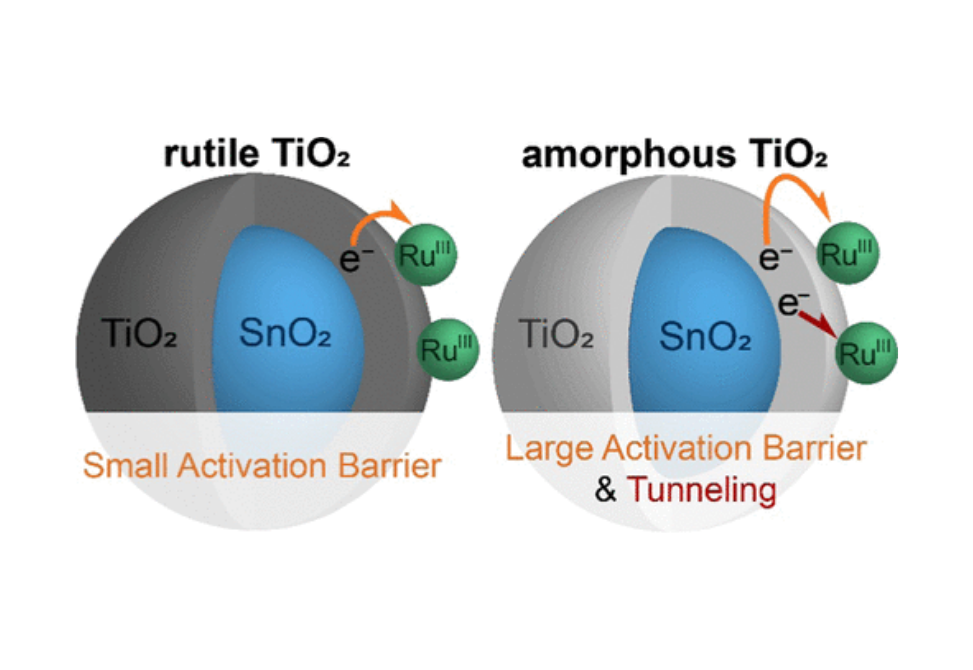Tunneling and Thermally Activated Electron Transfer in Dye-Sensitized SnO2 vertical bar TiO2 Core vertical bar Shell Nanostructures
Abstract
The mechanism for interfacial electron transfer (ET) from a metal oxide core|shell nanostructure to a [RuIII(2,2′-bipyridine)2(4,4′-(PO3H2)2-2,2′-bipyridine)]3+ sensitizer was probed through spectroscopic quantification of the ET kinetics over a 70 °C temperature range in an aqueous 0.1 M HClO4 solution. Mesoporous thin films of rutile SnO2 or insulating ZrO2 nanocrystals were coated through atomic layer deposition (ALD) with TiO2 shells of variable thickness to comprise the core|shell nanostructures. In agreement with previous research, Raman spectroscopy and transmission electron microscopy provided evidence that annealing the mesoporous SnO2|TiO2 materials at 450 °C resulted in rutile TiO2 shells. Materials heated to only 200 °C, termed “unannealed”, exhibited no evidence of crystallinity. Annealed and unannealed materials resulted in dissimilar interfacial ET kinetics. While temperature-independent kinetics indicated that ET occurred through tunneling in the thickest unannealed shells, materials with annealed shells underwent thermally activated ET. Further, thermally activated ET and tunneling competed in materials with unannealed shells less than 50 ALD-cycles thick. Arrhenius analysis of the thermally activated ET revealed large barriers, consistent with slow ET reactions for SnO2|TiO2 relative to SnO2 or TiO2 alone. Barriers were factors of 3–4 larger for unannealed SnO2|TiO2 materials than those observed upon annealing. Eyring analysis revealed that Gibbs free energies of activation were largely insensitive to heat treatment, ΔG‡ = 47 ± 3 kJ mol–1, and that ET was entropically favored for unannealed SnO2|TiO2 and entropically costly for annealed materials. A model is proposed wherein ET in annealed SnO2|TiO2 is rate-limited by electron transport in the shell, while ET in unannealed SnO2|TiO2 is rate-limited by electron escape from the core. The model is consistent with a comparative study of ZrO2|TiO2 materials for which insulating ZrO2 cores are energetically inaccessible to electrons. These mechanistic insights provide guidance on how to manipulate core|shell nanostructures for applications in solar water splitting.
Citation
Tunneling and Thermally Activated Electron Transfer in Dye-Sensitized SnO2|TiO2 Core|Shell Nanostructures
Rachel E. Bangle, Michael J. Mortelliti, Ludovic Troian-Gautier, Jillian L. Dempsey, and Gerald J. Meyer
The Journal of Physical Chemistry C 2020 124 (45), 25148-25159
DOI: 10.1021/acs.jpcc.0c08200


